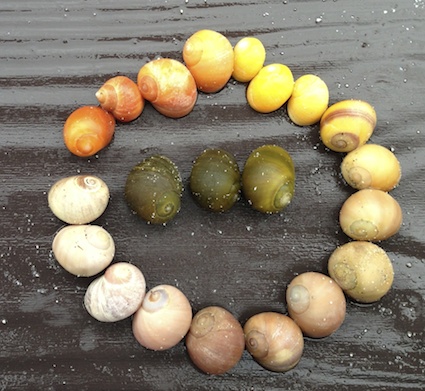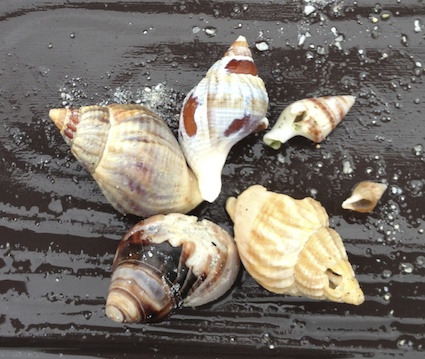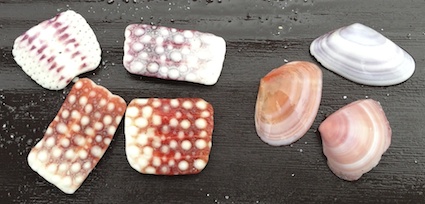
To find a seashell is to discover a world of imagination – Michelle Held
One of the best things about going to the sea can be finding shells. Some beaches, especially coral ones are littered with a myriad of shells. Others, it is more of a challenge to find even one or two. Regardless, every discovery is exciting in some way. So here’s some ideas should you be so lucky as to find a few shells…
1) Contribute to the Scottish Seashell Survey
Buglife Scotland are interested in recording the locations of certain seashells. Take part in the survey and enjoy sharing your finds and help Buglife learn more about seashore biodiversity. The ID chart is free to download and simple enough for very young children to use. They also have a straightforward seashore code to follow, which can ensure you search for shells in a way that minimises the environmental impact of your searches.
2) Can you work out the age of your shells?
Like snails, the spiral-shaped shells give an indication of the age of the animal that lives inside. With bi-valve shellfish such as cockles, try counting the number of rings. This can be easier if you have a magnifying glass to look at the shell. Find out how to tell the age of razor shells…

3) The Smallest Shell
Have a hunt for the smallest shell on the beach. Broken shells must not be counted as some sand is made up of lots of broken shells. This can be an ongoing challenge. Likewise invent other shell hunting challenges:
- The prettiest shell
- The shell that has the most interesting face
- The shell with the greatest range of colours
- Rather than sort shells by the usual attributes such as colour, size, species, see if anyone can invent other ways of classifying the shells found.
4) Limpet shell stacks and arches
Shell stacking is similar to stone stacking but on a miniature scale. They are a little simpler to balance. The other challenge is to see how many limpet shells can fit inside another shell – shells within shells. You can also try making limpet shell arches, as the shells do have a tendency to lean over.

5) Find a whelk and listen to the sea
If you hold a big shell to your ear you should be able to hear the sea. It works best with big whelks. As a child, my older sister and I would role play for hours going to the beach and this is how we pretended we were there.

6) See if it’s possible to make a shell float
There may be a trick or knack to this that you learn and can share with others. For example does it matter which way up it is placed on a pool of water?
7) Make pairs
Sometimes you are lucky enough to find shells that are still attached to make a pair. However another ongoing challenge is to find the matching half of shell. It’s a nice way to illustrate the subtle differences between shells that may be the same species but still differ.

8) Silver shells
One way to examine shell patterns is to rub tin foil over them or to wrap up shells in foil and rub them so that the pattern emerges. Very often children don’t notice the texture because the shape and colours dominate. By pressing shells into sand, you can also examine the imprints they leave.
9) Don’t drop the shell!
This is a nice beach race. Everyone who enters needs a spade. They have to dig and lift a spade full of dry sand. Then a shell is put on top of each spadeful of sand and everyone races to an agreed line or marker. If your shell becomes dislodged you must stop and put it back on.
10) Miniature worlds
Mary who was quite contrary made her garden grow with cockle shells. What little world or picture or scene would you create with shells and other finds on a beach?

I was like a boy playing on the sea-shore, and diverting myself now and then finding a smoother pebble or a prettier shell than ordinary, whilst the great ocean of truth lay all discovered before me – Isaac Newton




















Some lovely ideas for what to do with shells. I’ve always loved collecting them but then struggle to know what to do with them after. You have some lovely educational suggestions here for younger children. We have been stacking stones in the river this week, they make great art forms.
Thank you for sharing with me on #CountryKids